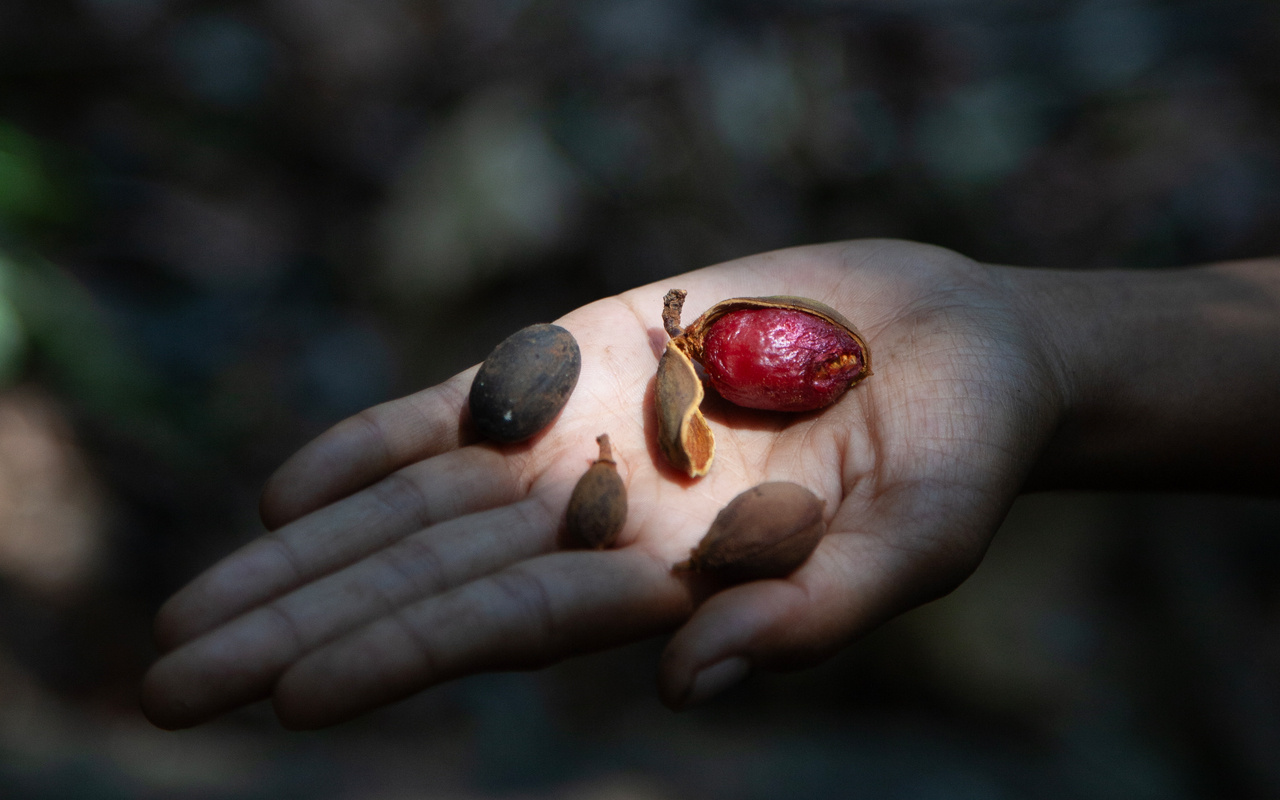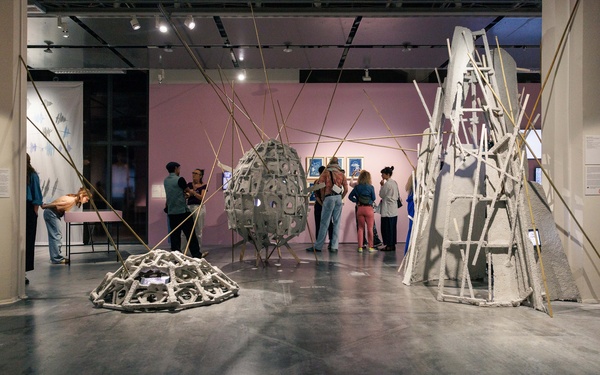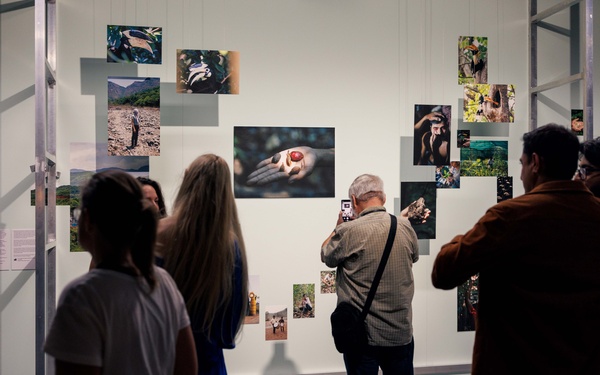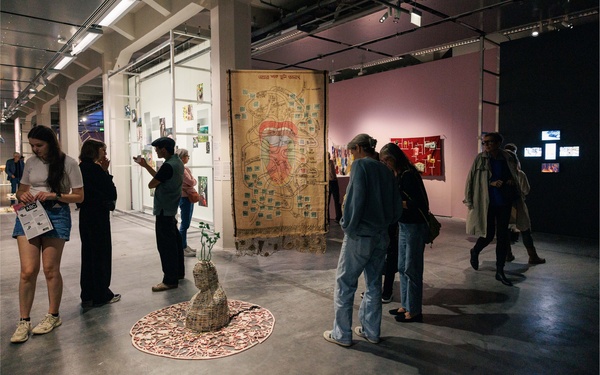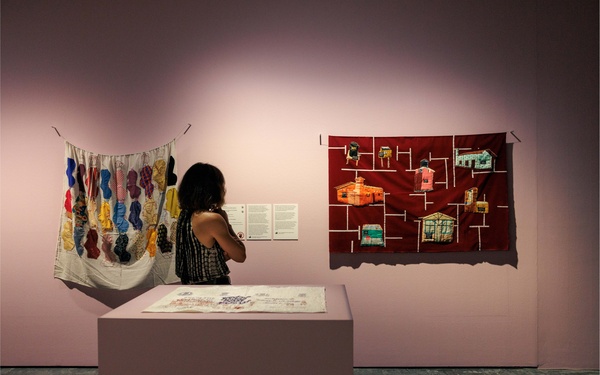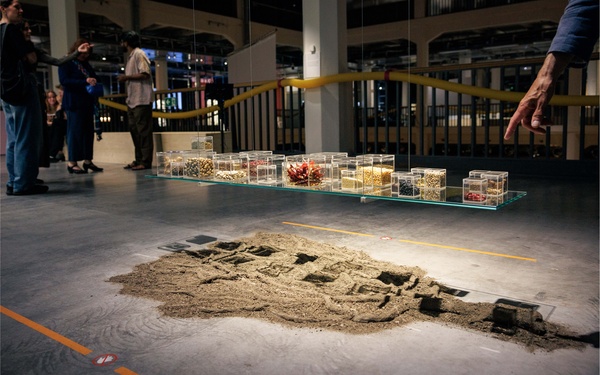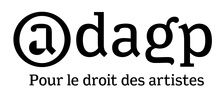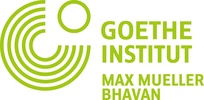- Exhibition
Assembling Grounds. Practices of Coexistence
An exhibition as part of »Fellow Travellers«
Sat, July 26, 2025 – Sun, February 08, 2026
How can we confront the many crises of our times as a society? And what active role can art play in this? How must we change our society on a systemic level so that the Earth remains habitable in the long term? How can we break with traditional notions of art in order to strengthen its social impact and forge new alliances between art, science, and society?
The exhibition »Fellow Travellers: Art as a Tool to Change the World« acts as a catalyst for these questions: As a place for possibilities, it offers a platform for artistic projects that demonstrate the benefits of art for society in an exemplary way. Divided into various chapters, »Fellow Travellers« unites projects of this kind in order to bring them into a dialog and facilitate exchanges.
In July 2025, »Fellow Travellers« will open the new exhibition chapter »Assembling Grounds: Practices of Coexistence«. The chapter was developed in India and Sri Lanka on the basis of the ZKM traveling exhibition »Critical Zones. In Search of a Common Ground« (2022–24). On its journey, this exhibition brought together diverse locations, local communities, and ideas from different contexts. Artists who participated in the exhibition project through local networks have now been invited to respond to »Fellow Travelers« questions as part of »Assembling Grounds«.
The works that resulted, including numerous new productions, interrogate modern paradigms of knowledge production and linear technological progress. They confront them with micro-histories of cultural resistance, drawing on traditional cultural techniques from various places on the Indian subcontinent. Art practice thus becomes a medium for the restoration and preservation of knowledge that is lost or threatened with oblivion due to ecological, urban, and political or economic developments. It is precisely these bodies of knowledge, which are often ignored in institutional contexts, that contain a wealth of valuable insights about how human and nonhuman actors, nature, and culture can be sustainably interwoven.
Many of the invited artists engage with the format of the archive and the assemblage: Parag Tandel’s and Kadambari Koli-Tandel’s works, for example, bring together local stories, recipes, and traditions of Mumbai's Koli fishing communities. Nilanjan Bhattacharya and Mallika Das Sutar, on the other hand, juxtapose rural and urban perspectives from Bengal that relate to the consumption of and trade in food. Ishita Chakraborty's sound sculpture interweaves human and nonhuman voices that she collected on her research trips to both India's mangrove forest in the Sundarbans and the Amazon rainforest in Brazil. In this way, the problem of climate change in both areas and its entanglement with colonial histories are addressed. In their works, Hema Shironi and Anuja Dasgupta question the perception and representation of land and homeland in various ways: Shironi's textiles tell personal and collective stories of postcolonial Sri Lanka, which is still afflicted by civil war. Dasgupta, on the other hand, dedicates her works on paper to the diversity of the plant world and raw materials as well as the stories of Ladakh in northern India.
The exhibition also presents concrete alliances between art institutions, public spaces, and nonhuman entities. Abhijit Patil, for example, focuses on the politics around seeds and seed banks; Maksud Ali Mondal experiments with the feeding habits and construction methods of termites, ants, and bees; and Stéphane Verlet-Bottéro, Oliver-Selim Boualam and collaborators continue to develop a long-term project on the Katzenwedelwiese, an orchard meadow in Karlsruhe, and create a series of objects from local organic materials that demonstrate the potential of a perma-circular economy.
These works and the research approach of the philosopher Bruno Latour (co-initiator of »Critical Zones«) motivate us to acknowledge how much we are dependent on nonhuman beings and to include these co-beings in our thoughts on social communities and museum practices.
The exhibition rejects a one-dimensional representation of local knowledge and local actors. Rather, the exhibited projects weave themselves into multiple, new, and ambiguous narratives that are much more in accordance with a changing world than a single, overarching narrative could ever be. In this way, we explore in practice a new, “interlocal” way of thinking and acting that connects the most diverse places and creates open spaces for a context-dependent dialog.
»Assembling Grounds« invites you to develop a new kind of curriculum: What practices, what tools, what knowledge, and what relational designs can we appropriate to find ways towards a better coexistence? To pursue these questions, the projects presented will be effective and activated beyond the format of an exhibition: residencies, conversations, and interventions by actors from various disciplines make the exhibition an open process of constant change.
Impressum
Curators: Mira Hirtz, Daria Mille
Curatorial assistance: Hanna Jurisch
Project assistance: Anouk Rebstock, Emma Robert
Technical project management: Anne Däuper
Scenography: Matthias Gommel
Restoration: Leonie Rök
Museum Communication: Banu Beyer, Lisa Bartling
Registrar: Natascha Daher
Text editing: Miriam Stürner, Theresa Zettelmann
Graphic Design: 2xGoldstein
Film: Max Clausen, Andy Koch, Alex Thelen
Marketing: Marlen Ernst
Communication: Sabine Jäger, Sebastian Klein, Franziska Klöck, Lilli Roser
With special thanks to Amruta Nemivant
-
Supported by
-
In cooperation with
